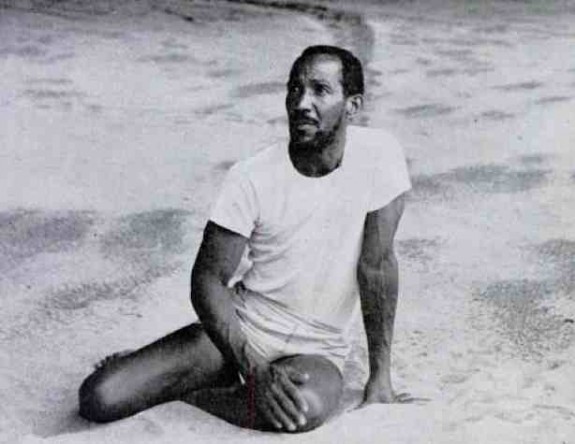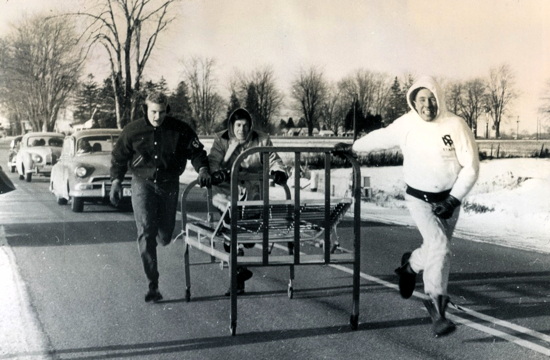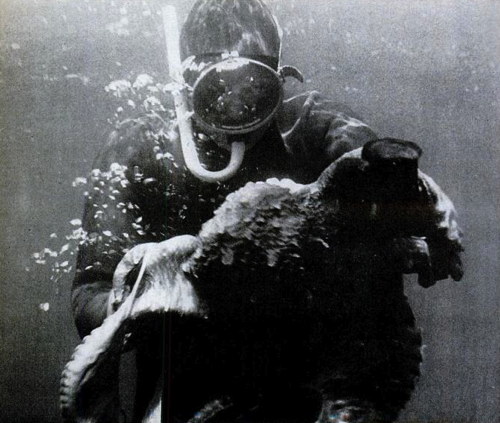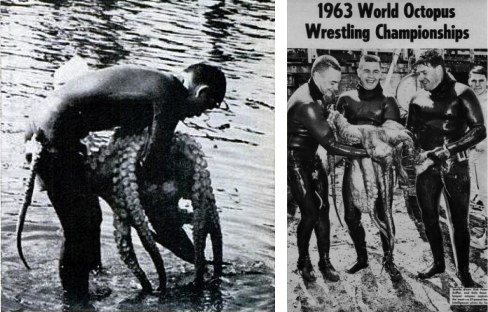1960s
Twinkle, The Star That Came Down From Heaven

In the mid-1960s, when I was in elementary school, I had a subscription to HUMPTY DUMPTY MAGAZINE. A very weird comic strip therein was titled "Twinkle, The Star That Came Down From Heaven." (Seen above, drawn by Jerry Smath, and courtesy of the Flickr stream of Glen Mullaly.) Even as a kid, I knew it was strange. A living, sentient star who manifested on Earth in a bipolar costume and kept his face-equipped iconic star head? And did he come from the celestial heaven or the Christian Heaven? Far out!
Little did I know until recently that "Twink" had earlier adventures in the 1940s, in the pages of CALLING ALL KIDS, that were even more bizarre in their fashion. Unfortunately, no information remains about the writer and/or artist who was crazed enough to invent Twinkle.

You can read several issues here.
This issue appears to be Twink's origin story.
I love those giant railroad engineer/welder's gloves he wears in his 1940s incarnation.
Posted By: Paul - Mon Apr 15, 2013 -
Comments (4)
Category: Anthropomorphism, Fey, Twee, Whimsical, Naive and Sadsack, Freaks, Oddities, Quirks of Nature, Comics, Children, 1940s, 1960s
Bernard Wheatley, Hermit

The man depicted above is Dr. Bernard Wheatley who, after the deaths of his family, chucked a flourishing career to live as a hermit on the Hawaiian island of Kauai.
Read a long and fascinating article about him here.
In 1957 Dr. Bernard Wheatley - an African American physician from the Virgin Islands - made a pilgrimage to Kalalau Valley. Distraught after the death of his wife and son in a car accident, he kept questioning the meaning of life and other ontological problems until the answers finally came. In a remarkable religious conversion-like revelation he realized that life is eternal. He abandoned his medical practice, sold all his worldly possessions and sought a quiet, secluded place where he could earnestly seek truth without distraction. He arrived on the remote Island of Kauai and after seeing Kalalau from a ridge-top lookout in Kokee, he knew that he had found his home.... He passed on December 3, 1991 at the age of 72. His ashes were spread in Kalalau.
Posted By: Paul - Wed Apr 10, 2013 -
Comments (4)
Category: Death, Religion, Hermits, 1950s, 1960s, South Pacific
Music Good Enough to Eat
The Peanut Butter Conspiracy.
The Chocolate Watchband.
Posted By: Paul - Sat Apr 06, 2013 -
Comments (1)
Category: Food, Chocolate, Junk Food, Music, Bohemians, Beatniks, Hippies and Slackers, Psychedelic, 1960s
Miss Honeywell
Miss Honeywell, advertised as being the world's first robotic woman, was a fake, but not in the obvious way. Reportedly, she was actually a he — actor Jeremy Sebastian.
Posted By: Alex - Mon Apr 01, 2013 -
Comments (4)
Category: Robots, 1960s
Long-Distance Bed Pushing
Whatever happened to long-distance bed pushing? It was a craze that swept across colleges in 1961. Time magazine (Feb. 24, 1961) reported on it:I found reports of students continuing to push beds long distances as late as 1979 when a new world record was set (1,980 miles by students from Pennsylvania's St. Vincent College who pushed a bed in laps around a shopping center). But then the fad seemed to fade away. At least, I haven't been able to find reports of more recent updates to the record.
The picture below shows students from Ontario Western University pushing a bed along a highway back in 1961.

Posted By: Alex - Thu Mar 21, 2013 -
Comments (6)
Category: Fads, World Records, 1960s
The Sadist
If the trailer (top) fascinates, the full movie follows.
Posted By: Paul - Sat Mar 16, 2013 -
Comments (4)
Category: Misbehavior, Rebellion, Acting-out and General Naughtiness, Movies, 1960s, Brain Damage
Birth of the Transistor Radio
Who could have predicted that the technology above would lead to the result below?
A useful reminder for Apple as they attempt to deliver a wristband computer--with what unpredictable results and uses, we shall ultimately find out!
Posted By: Paul - Sat Mar 09, 2013 -
Comments (7)
Category: Music, Technology, Television, Bohemians, Beatniks, Hippies and Slackers, 1950s, 1960s
Eurovision Winner: 1967
The annual Eurovision contest is chugging along, and we haven't made fun of a past winner in a while.Here's the best Europe could offer in 1967, a year when everyone else was listening to revolutionary work by the Doors, the Stones, the Beatles, et al.
Sandie Shaw on Wikipedia.
Posted By: Paul - Sun Feb 24, 2013 -
Comments (9)
Category: Contests, Races and Other Competitions, Music, 1960s, Europe
Octopus Wrestling
According to wikipedia, octopus wrestling "involves a diver grappling with a large octopus in shallow water and dragging it to the surface."Popular Mechanics (May 1966) provides some more details:


Posted By: Alex - Sat Feb 23, 2013 -
Comments (7)
Category: Sports, Wrestling, 1960s
Early Solar-Powered Car
A 1912 Baker Electric car that was retrofitted with a solar panel by Charles Escoffery for the International Rectifier Corp. back in 1960. The panel cost $20,000. (I don't know what that would be in present-day money, but it wouldn't be cheap.) With the panel, the Baker could run at 20 mph for three hours. International Rectifier hoped to soon be churning out "noiseless, smogless" solar cars for $5000 each. It's 53 years later now, and we're still waiting. Source: Newsweek (Mar 7, 1960) & M3GA.

Posted By: Alex - Sat Feb 16, 2013 -
Comments (4)
Category: Inventions, 1960s, Cars

| Who We Are |
|---|
| Alex Boese Alex is the creator and curator of the Museum of Hoaxes. He's also the author of various weird, non-fiction, science-themed books such as Elephants on Acid and Psychedelic Apes. Paul Di Filippo Paul has been paid to put weird ideas into fictional form for over thirty years, in his career as a noted science fiction writer. He has recently begun blogging on many curious topics with three fellow writers at The Inferior 4+1. Contact Us |




